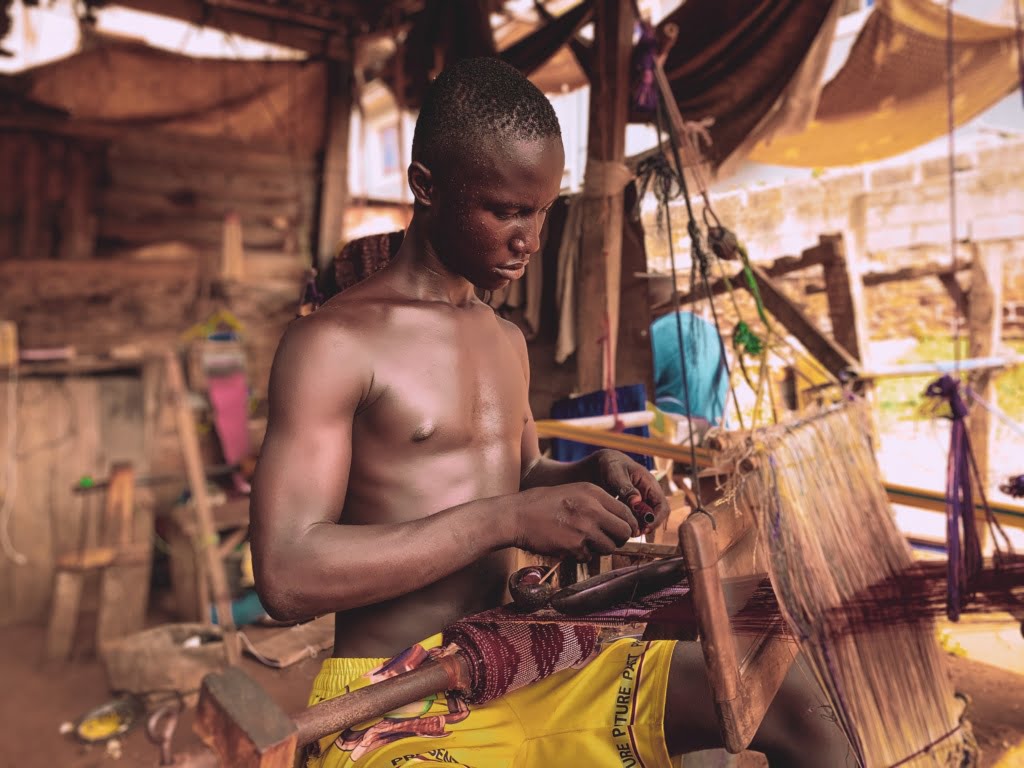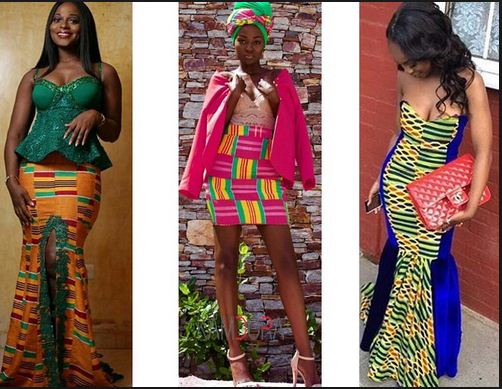© Hinkro Kente 2024. All right reserved. Terms and Privacy.
Built and managed by Nusite IT Consulting Limited
In the kaleidoscope of African textiles, two standout stars – Kente and Ankara fabrics – shine brightly, each with its own unique history, patterns, and cultural significance. While both fabrics are celebrated for their vibrant designs and cultural heritage, they possess distinct characteristics that set them apart. In this blog, we’ll dive into the captivating world of Kente and Ankara fabrics, highlighting their differences and celebrating their individual charm.
Kente Fabric: A Testament to Tradition

Origin: Kente fabric originates from the Ashanti and Ewe peoples of Ghana, as well as the Akan people of Côte d’Ivoire. Its roots are deeply embedded in the history and traditions of West Africa.
Weaving Technique: Kente fabric is renowned for its intricate weaving technique. It is handwoven by skilled artisans who meticulously interlace thin strips of cloth, resulting in vibrant and complex patterns. The weaving process is a time-intensive labor of love that requires expertise and patience.
Symbolism: Kente patterns are laden with symbolism, each design and color combination conveying a specific message. The colors hold profound meaning – gold signifies wealth and prestige, blue represents spirituality, green symbolizes growth, and so on. The patterns, often referred to as “Adinkra,” communicate values, proverbs, and cultural stories.
Occasions: Historically, Kente fabric was reserved for special occasions and ceremonies, such as weddings, funerals, and royal events. Its association with nobility and prestige earned it the title of “royal cloth.”
Ankara Fabric: A Fusion of Tradition and Modernity

Origin: Ankara fabric, also known as African wax print fabric, has its origins in Indonesia but gained popularity across West Africa through Dutch and British colonial trade.
Printing Technique: Unlike Kente fabric, which is woven, Ankara fabric is characterized by its vibrant and intricate prints. These prints are achieved through a wax-resist dyeing technique. The fabric is printed with wax designs, which resist the dye during the coloring process, resulting in eye-catching patterns.
Versatility: Ankara fabric has embraced versatility and modernity. It is widely used for both traditional and contemporary clothing. From dresses and skirts to suits and accessories, Ankara fabric has made its mark on global fashion runways.
Cultural Adaptation: While not as deeply steeped in traditional symbolism as Kente fabric, Ankara prints often carry cultural motifs and stories that resonate with the wearer’s identity and heritage.
In Conclusion
Kente and Ankara fabrics stand as cultural treasures, each embodying the stories and traditions of different African regions. Kente fabric’s intricate weaving and symbolic meanings connect us to the past, while Ankara fabric’s vibrant prints bridge tradition with modern fashion sensibilities. The differences between these fabrics highlight the diversity and richness of African textile heritage. Whether you’re drawn to the intricate patterns of Kente or the bold prints of Ankara, both fabrics tell stories of creativity, resilience, and the enduring power of cultural expression. So, whether you’re donning a Kente stole for a special occasion or rocking an Ankara dress with pride, you’re not just wearing fabric – you’re wearing a piece of history and culture.

